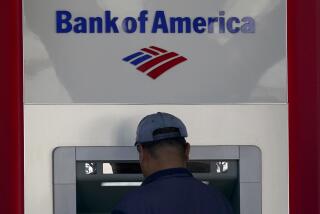U.S. Regulators Defend Bailout in New England : Banking: The FDIC chairman told a Senate committee that the move may restore confidence--but at a cost of about $2.3 billion.
- Share via
WASHINGTON — Federal banking regulators Wednesday defended the $2.3-billion bailout of the Bank of New England and their decision to protect all depositors, saying that the move was necessary because of the severe recession in the Northeast.
Regulators on Sunday seized control of the three main banks owned by Bank of New England Corp., which on Monday filed for bankruptcy. The Federal Deposit Insurance Corp. will operate the three banks until they are sold.
FDIC Chairman L. William Seidman told the Senate Banking Committee that a decision to protect uninsured deposits at the banks will cost the bank insurance fund an extra $200 million to $300 million. But he said the decision in the end may save the dwindling insurance fund money by restoring confidence in the banking system in New England, which has been hit by severe recession.
The failure is expected to cost the FDIC about $2.3 billion. Seidman told the panel that had uninsured depositors been left unprotected, depositors would have pulled money out of other banks and created a bigger problem in the region.
He said regulators felt “this could have increased the panicky conditions in the area.”
Depositors in the region already were nervous after 45 privately insured banks and savings institutions in Rhode Island were temporarily closed after the private insurance fund went bankrupt.
About $1 billion was withdrawn from the Bank of New England after the company said Friday that it expected about a $450-million loss in the fourth quarter.
“It was our judgment that is was necessary to stabilize the banks, retain franchise value and cool runs,” he added.
Comptroller of the Currency Robert L. Clarke said earlier efforts by regulators to save the Bank of New England failed because of the severity of the economic slide in the region. Much of the bank’s lending was in real estate and the depressed market in New England created big problems for the banks.
Seidman said he expected more bank failures in New England, but added that he did not anticipate one the size of the Bank of New England, which had about $23 billion in assets and was the third-largest bank in New England.
“We have not identified institutions of this size that might fail,” Seidman said.
Seidman said he expected about 180 banks to fail nationwide this year, up from 170 in 1990. Previously he has said he expected about the same number of failures this year as last year.
He said the estimate assumed that the recession will be short and recovery will start by the second half of next year.
The FDIC expects to lose $5 billion dollars this year from failures, bringing the fund to its lowest level in history. It will have only 20 cents per $100 of insured deposits, compared to 44 cents per $100 now, Seidman said.
Regulators are discussing ways to rebuild the fund by using bank resources rather than taxpayer money.
But Seidman said that if there is a severe recession, not only would more failures be expected, but the government may have to turn to taxpayers to refinance the insurance fund.
More to Read
Sign up for Essential California
The most important California stories and recommendations in your inbox every morning.
You may occasionally receive promotional content from the Los Angeles Times.













